10/14 Entertainment History
“Once or twice I’ve been described as a light comedian. I consider this the most accurate description of my abilities I’ve ever seen. Honestly, I think I’ve stretched a talent which is so thin it’s almost transparent over a quite unbelievable term of years.”
~Bing Crosby
ROCK & ROLL HISTORY

1965 – Michael Nesmith – using a stage name of Michael Blessing – released The New Recruit just weeks before he was hired to become a Monkee.
1967 – The Who released I Can See For Miles.
The song became a major disappointment for songwriter Pete Townshend. He was convinced it would be a #1 hit, but when released as a single, it only reached #10 in the UK and #9 in the U.S.

1968 – The Beatles completed the recording of Savoy Truffle, a song inspired by Eric Clapton’s teeth.
“It was written for Eric,” Harrison said in 1977. “He’s got this real sweet tooth and he had a lot of cavities in his teeth. So as a tribute I wrote, ‘You’ll have to have them all pulled out after the Savoy Truffle.’ The truffle was some kind of sweet, just like all the rest – cream tangerine, ginger sling, just candy – to tease Eric. He had a good laugh about it.”
Many of the lines in the song came directly from the varieties of chocolate in a box of Mackintosh’s Good News chocolates, although Cherry Cream and Coconut Fudge were Harrison’s own inventions.
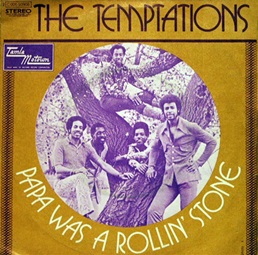
1972 – The Temptations released Papa Was A Rollin’ Stone.
The song was written by Motown songwriters Norman Whitfield and Barrett Strong for Motown group The Undisputed Truth in 1971. Their single peaked at # 63 on the pop charts.
Whitfield remade it as a 12-minute album cut for The Temptations, and their 6:54 single version became a #1 hit on the Billboard Hot 100 and won three Grammy Awards.
1977 – Johnny Paycheck released Take This Job And Shove It.
The single – written by David Allan Coe – hit #1 on the Billboard Country charts and was Paycheck’s only #1 hit.

2006 – Freddy Fender (Before The Next Teardrop Falls) and later a member of the Tex-Mex supergroup Texas Tornados (Soy de San Luis) died of cancer at the age of 69.
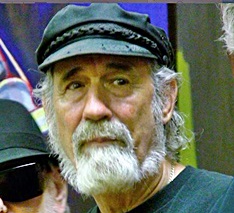
2012 – B.B. Cunningham, lead singer, guitarist and keyboardist with The Hombres – Let It Out (Let It All Hang Out)) – and a longtime member of Jerry Lee Lewis’ touring band, was shot to death while on duty as a security guard in Memphis. He was 70.
MOVIE/TV HISTORY
1959 – Actor Errol Flynn died of a pulmonary embolism at the age of 50.
He starred in Captain Blood, The Charge Of The Light Brigade, The Adventures Of Robin Hood, They Died With Their Boots On (and many more).
1977 – Actor and singer Bing Crosby died at the age of 74 after finishing a round of golf at the the La Moraleja Golf Course near Madrid, Spain.
As Crosby and his party headed back to the clubhouse, he said, “That was a great game of golf, fellas. Let’s get a Coke.”
About 20 yards from the clubhouse entrance, Crosby collapsed and died instantly from a massive heart attack.
As an actor, he starred in (The Bells Of St. Mary’s, The Country Girl, Going My Way (for which he won the Academy Award for Best Actor), and of course, The Road To… series of comedies with Bob Hope.
As a singer, his output was legendary; (Swinging On A Star, Too-Ra-Loo-Ra-Loo-Ra’, White Christmas (and many, many more).
Video Factoid: The video below shows Crosby’s first filmed performance (as a member of The Rhythm Boys in The King Of Jazz) and his last (Bing Crosby’s Merrie Olde Christmas television special), filmed one month before his death.
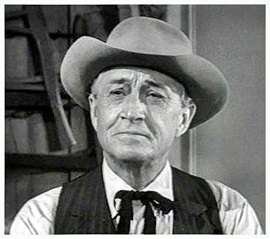
1983 – Actor Paul Fix died of kidney failure at the age of 82.
Fix appeared in more than 300 feature films and dozens of television shows over a 56-year career, but was best known for portraying Marshal Micah Torrance in The Rifleman from 1958 to 1963.
Fix Factoid: In the 1930s, Fix met John Wayne and became his acting coach. He would eventually appear as a featured player in 27 of Wayne’s films, including The Fighting Seabees, Back to Bataan, The Sons of Katie Elder, and The Undefeated.
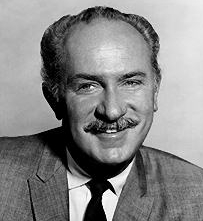
1986 – Actor Keenan Wynn died of pancreatic cancer at the age of 70.
The son of vaudeville comedian and acting legend Ed Wynn starred in The Man In The Gray Flannel Suit, Dr. Strangelove, and The Absent-Minded Professor, to name just a few.
Ed and Keenan both starred in the original 1956 Playhouse 90 television production of Rod Serling’s Requiem For A Heavyweight.
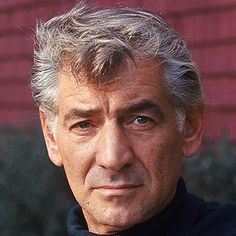
1990 – Composer and conductor Leonard Bernstein (West Side Story, On The Town, On The Waterfront) died from emphysema at the age of 72.

1994 – Pulp Fiction opened in theaters.
The film earned more than $100 million at the box office and was also a huge critical hit, winning the Palme d’Or at the Cannes Film Festival and earning seven Academy Award nominations, including Best Picture.

2007 – Keeping Up with The Kardashians premiered on the E! cable network.
The program focused on the exploits of the self-absorbed Kardashian–Jenner blended family and became one of the longest-running reality television series in history … although in my personal opinion, there never was anything “realistic” about it from day one.
SPORTS HISTORY

1979 – Wayne Gretzky of the Edmonton Oilers scored the first goal of his NHL career in a game against the Vancouver Canucks.
By the time he finished his career in 1999, “The Great One” had scored 894 goals, more than any player in NHL history. He also holds the record for most assists with (1,963) and points (2,857).

2003 – A 26-year old Chicago Cubs fan named Steve Bartman plucked a fly ball out of the air before outfielder Moises Alou could catch it – a catch that would have been a crucial out – in the sixth game of the league championship series against the Florida Marlins.
Bartman was escorted from Wrigley Field by security guards as bloodthirsty fans hurled beer cans and other debris at his head. Florida won the game – and the seventh and deciding game the next day.
Postscript: When the Cubs finally won the World Series in 2016 – ending a 108-year drought – Bartman received a championship ring from Cubs owner Tom Ricketts who hoped the gesture would provide closure for all involved.
Compiled by Ray Lemire ©2005-2020 RayLemire.com / Streamingoldies.com. All Rights Reserved.
